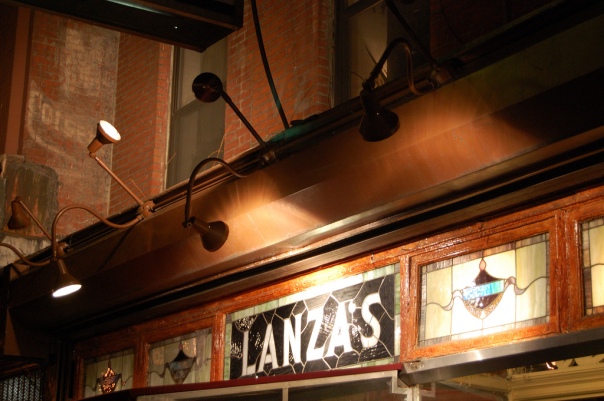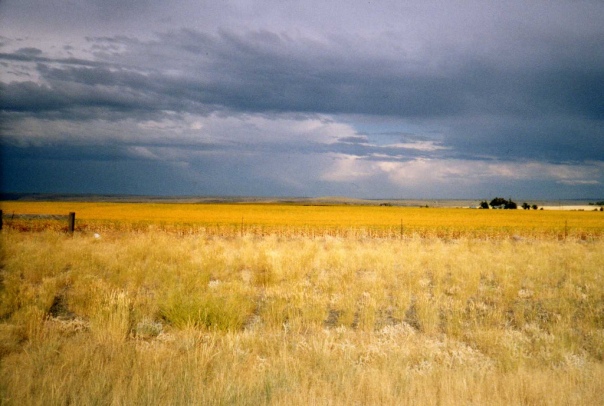Monthly Archives: April 2012
Ventilate is 1 year old!
On May 1 of last year, I posted the first entry to Ventilate – I was setting out to create an outlet for musings on a wide range of interests:
from New York City history, (https://ventilateblog.wordpress.com/2012/03/25/101-years-on-the-triangle-shirtwaist-factory-fire/)
to abandoned places/urban exploration (https://ventilateblog.wordpress.com/2011/05/19/staten-island-ship-graveyard/)
from music, (https://ventilateblog.wordpress.com/2011/09/14/sacred-harp-and-idumea/)
from Europe (https://ventilateblog.wordpress.com/2011/07/08/a-brief-history-of-antwerp/)
to Mexico (https://ventilateblog.wordpress.com/2012/01/25/deep-in-the-yucatan-valladolid-mexico/)
to Delaware (https://ventilateblog.wordpress.com/2012/02/08/frozen-in-the-18th-century-new-castle-delaware/)
from photography (https://ventilateblog.wordpress.com/2011/12/04/fairytale-of-new-york/)
to Occupy Wall Street (https://ventilateblog.wordpress.com/2011/09/26/occupy-wall-street-day-9/)
And everything in between!
My inaugural post was on May Day (https://ventilateblog.wordpress.com/2011/05/01/mayday2011/), about its quirky history as a Moving Day in New York, and about the arrival of Spring.
The country has changed very much in the past year, and this year is aimed to bring May Day back to its political side, with a general strike called in cities across the U.S. –
I’m looking forward to another year of Ventilate-ing!
the free speech cage
“Congress shall make no law respecting an establishment of religion, or prohibiting the free exercise thereof; or abridging the freedom of speech, or of the press; or the right of the people peaceably to assemble, and to petition the Government for a redress of grievances.“
It’s almost unbelievable that this precept must still be asserted. I saw for the first time the “free speech zone” at the steps of Federal Hall in Lower Manhattan. A recent development of Occupy Wall Street has brought protesters back to the old colonial streets surrounding the NYSE. Other than those who choose to sleep on the sidewalks there (as allowed by a 2000 city law), there has been no permanent occupation set up. However, OWS has been maintaining a daily presence in the neighborhood, and particularly at Federal Hall.
In response, the powers-that-be have erected a barricade on the steps, in which one is “allowed” to protest. Outside this so-called 1st Amendment Zone one is “not allowed” to protest. Only 25 people are allowed inside the space at any given time. In being held so, protesters’ ability to display their message is drastically hindered.
The entire idea is completely absurd. Cross an arbitrary line and one is permitted to exercise their right to free speech. Cross back and one is not permitted. This defies all common sense. However, it has been deployed for decades in the United States. Among many other instances, the abhorrence of the “free speech cage” reached an apex during the 2004 national conventions, when such places were placed at a considerable distance from the actual events and from media attention.
“…abridging…” – shortening; condensing. Doesn’t confining people to a small area abridge the right to free speech? And doesn’t telling citizens where they can and cannot assemble abridge the right to peaceful assembly and petition?
What makes this all the more disgusting at Federal Hall is that it is the site (though the present building dates from 1842) where George Washington was inaugurated our first president; and where the Bill of Rights was first passed by Congress. This is happening right beneath the famous statue of Washington.
Even in the face of such indignity, one must keep a sense of humor. Tongue-in-cheek, it was suggested that the statue be counted among the 25 people “allowed” to protest in the cage.
Today was a joint march with Occupy Wall Street and ACT-UP, a group that, in the 1980’s, was at the forefront of the fight for the rights of people suffering with AIDS:
Undead – Mt Saint Helens
In true Pacific Northwest fashion, it was impossibly damp, and as the morning rolled in, the fog covering the nearby peaks above Yale Lake created a scene reminiscent of some German Romantic landscape painting. Completely still and almost smothered in a heavy blanket of silence, the night had been spent under a dark cathedral of dripping-wet evergreens. The dense air bore the sort of earthy, tree-y smell that is hard to ever forget.
We warmed up the car, rented a few days before on a blistering August day at the Portland, Oregon, Rent-a-Wreck. The speedometer on the beat-up, early-90’s Plymouth Acclaim didn’t register – there was no real way of counting our speed on the lonely back roads, as we burned a crazed line through the dried brushlands of Maupin and Madras, the rainforests of Silver Falls, the stunning Columbia River Gorge, the humid cold-water coast of Cannon Beach and Astoria. The previous night, we’d pushed the old boat to her limits, careening around the close turns of the Cascade foothills, blowing past the countless espresso stands that dot this region.
Now, on this heavy-aired morning, we were chugging up a steep, steep gravel road that seemed to hang half-way off the cliff- the view plunged downward into grey obscurity. The first hour or so on the trail was a deeply forested ramble. It is said that wildlife goes quiet just before a natural cataclysm, and so the eeriness of the foggy, lonesome silence was knowingly palpable. We began to feel the volcano beneath. Not far under our very feet magma was flowing- a fact completely lost on the still pine woods.
It was much that way in this forest a little more than 30 years ago, right before the mountain blew up. Back then, the area was an idyllic retreat of cabins, lakes, and scenery. Mt. St. Helens’ perfect, snow-capped cone had been known as “the Fuji of America”. Magma had flowed underneath back then as well, but not many had paid it much mind for centuries.
Soon the trail abruptly emerged from the forest – the treeline. Now the mountain began to bare its volcano-ness. A great wall of boulders and pumice spread out before us, sloping into the clouds. Sitting on some rocks, seeing nothing but quickly moving fog (now we were truly in the sky), we lunched on a healthy assortment of Chef Boyardee, granola bars, and Red Bull. Scavenging chipmunks, the only discernable form of animal life at this desolate height, pressed against our legs hoping for a scrap of the processed American food of the world below.
When Mt. St. Helens erupted on May 18, 1980, tons and tons and tons of rock were immediately pulverized, cast into the atmosphere, or sent roaring down into the untouched forests below. Summer homes, unfortunate outdoorsmen who disregarded evacuation warnings, scientists, and an entire lake, disappeared without a trace. The ash cloud, which was just minutes before sold mountain rock, darkened the Northwest. Riding by cab at 2am, a few weeks before our climb, coming from the airport to my friend’s place in Portland, the driver told of the cloud. How everyone was told to stay inside, how the ash was possibly fatal to inhale, how it looked like a snow storm, how the falling fertilizer made everyone’s lawns spectacular that summer.
Now the trail itself became an immense field of ash – the remnants of the peak that was. An endless dune extending beyond sight. Here we forgot about the magma and the evidence of earth’s explosive power surrounding us. There is always the point during any climb when the romance falls away and the journey becomes a test of will. Here on the snow and ash, we came to that point. Everything was powder, and every step resulted in a Sisyphean slide backwards. The air was thinner now than we coastal dwellers were used to, and the pauses became more and more frequent.
Then finally the summit. Though, it could hardly be called a summit in the normal sense. It was really just the highest point along the crater rim. The true summit had been blown away years ago. There was no rewarding view – we were still in the clouds. We worked up the courage to peer over the crater rim and looked into a great foggy abyss, like the edge of the earth. Though we couldn’t see it, we knew that thousands of feet straight below, a new dome was forming- the molten stone building anew, ready to thrust another summit slowly into the clouds. To have it explode again hundreds or thousands of years from now. To see a volcano in this state is a rare privilege of place and time. Afterall, for most of its life, a volcano is just a mountain, alive surely, but not true to its nature until it convulses and discharges and rebuilds. A release it must wait centuries for, the power of the ages sent spewing out in a flicker of a moment.
(From an alternate perspective, a volcano is pretty much an earth zit, building until the pressure is just too unbearable…)
After a considerable rest, some snacks, and an ill-advised cigarette, we started back down. As we did, the sky began to break and a glorious, though short-lived, view of the green distantly below finally tempered the barren world we’d been traversing the entire day.
Entering New York, by bus, from New Jersey – northbound
The scenery of the southern New Jersey Turnpike is horrifically boring. All endless, uniform, monotonous forest.
But then gradually, from inside the rocking white-noise silence of the bus, the landscape begins to show evidence of a great metropolis – giant warehouses and factories appear, their numbers growing slowly more dense.
Once upon a time, coming from the south, the first visible signs of New York City were the small boxy silhouettes of the monolithic Twin Towers way in the distance. Today the new World Trade Center has become the new beacon, announcing Manhattan across scores of miles.
The Meadowlands – marsh, straight marsh… squeezed between Newark and the cliffs lining the Hudson River, fighting heavy industry for scraps of waterlogged earth. Enormous steel skyways arc impossibly, hundreds of feet above – arteries feeding the great city.
The diminutive skyline of Newark, New Jersey, shirks huddled in the northwest, as planes taxi and take off from its airport along the turnpike, receiving and discharging people from every corner of the globe.
Now – paralleling the ridge of the southern Palisades, the entire breadth of Manhattan becomes abundantly clear. You can pick out more of the skyscrapers now – the Time Warner Center, Worldwide Plaza, the Chrysler, the Empire, 40 Wall, the AIG Building, the World Trade….
Here the highway turns eastward and begins to trench through the ridge; the skyline mysteriously disappearing as the road burrows through primal granite.
And then emerging back into the wide open air, suddenly the view becomes total Manhattan, the skyline, right in your face, just across a thin stretch of the Hudson River. Arrival.
The bus curves around the Helix, and then quickly into the Lincoln Tunnel, plunging under the river and straight into the into the very shadow of the Empire State Building – a tower you’ve been tracking from afar for many minutes.
“counting the cars on the New Jersey Turnpike…”:
(Granted – this journey is far less magical in heavy traffic.)
























